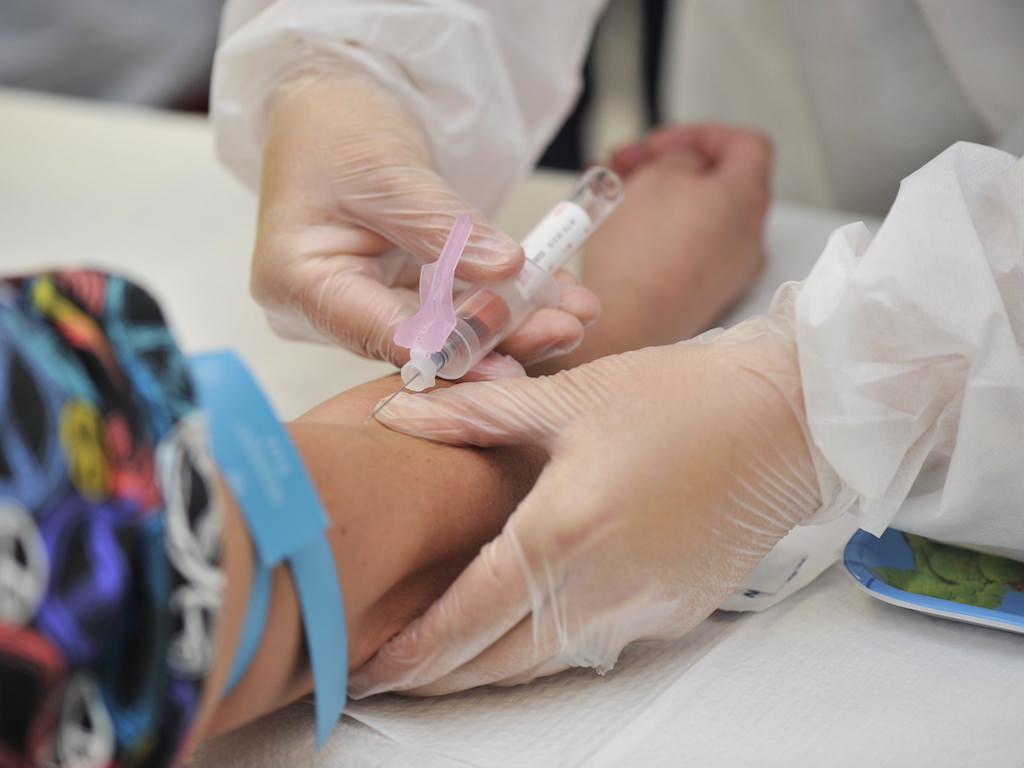The Main Principles Of Northeast Medical Institute - New Haven Campus Phlebotomy Course & Cna Class
The Main Principles Of Northeast Medical Institute - New Haven Campus Phlebotomy Course & Cna Class
Blog Article
The 9-Minute Rule for Northeast Medical Institute - New Haven Campus Phlebotomy Course & Cna Class
Table of ContentsThe Buzz on Northeast Medical Institute - New Haven Campus Phlebotomy Course & Cna ClassFascination About Northeast Medical Institute - New Haven Campus Phlebotomy Course & Cna ClassSome Known Questions About Northeast Medical Institute - New Haven Campus Phlebotomy Course & Cna Class.Northeast Medical Institute - New Haven Campus Phlebotomy Course & Cna Class Things To Know Before You BuyNortheast Medical Institute - New Haven Campus Phlebotomy Course & Cna Class for DummiesSome Known Factual Statements About Northeast Medical Institute - New Haven Campus Phlebotomy Course & Cna Class
The usage of such tools ought to be gone along with by other infection prevention and control methods, and training in their use.For settings with low resources, price is a driving variable in purchase of safety-engineered devices. Where safety-engineered devices are not readily available, knowledgeable use of a needle and syringe is appropriate.
In the blood-sampling room for an outpatient department or facility, give a comfy reclining sofa with an arm remainder.
What Does Northeast Medical Institute - New Haven Campus Phlebotomy Course & Cna Class Do?
Ensure that the signs for blood sampling are plainly defined, either in a written procedure or in documented instructions (e.g. in a laboratory form). Gather all the tools required for the treatment and place it within secure and easy reach on a tray or cart, guaranteeing that all the things are clearly visible.
Where the patient is adult and mindful, follow the steps detailed listed below. Introduce yourself to the client, and ask the person to state their full name. Inspect that the research laboratory kind matches the patient's identity (i.e. match the individual's information with the laboratory kind, to make sure precise identification). Ask whether the license has allergies, fears or has actually ever before collapsed during previous injections or blood draws.
Make the person comfy in a supine placement (if feasible). Area a tidy paper or towel under the client's arm. Review the test to be executed (see Annex F) and acquire verbal permission. The client has a right to decline a test at any moment before the blood tasting, so it is necessary to make certain that the person has actually comprehended the procedure.
Northeast Medical Institute - New Haven Campus Phlebotomy Course & Cna Class Can Be Fun For Anyone
Extend the patient's arm and inspect the antecubital fossa or forearm. Locate a vein of a great dimension that is noticeable, straight and clear.
DO NOT place the needle where blood vessels are drawing away, due to the fact that this raises the opportunity of a haematoma. Situating the blood vessel will certainly aid in establishing the proper dimension of needle.
Haemolysis, contamination and visibility of intravenous fluid and medicine can all alter the results (39. Nursing team and doctors might access main venous lines for samplings adhering to methods. Nevertheless, specimens from central lines bring a danger of contamination or incorrect laboratory test results (https://www.pubpub.org/user/marvin-gordon). It serves, however not suitable, to injure specimens when first introducing an in-dwelling venous device, prior to connecting the cannula to the intravenous liquids.
Not known Facts About Northeast Medical Institute - New Haven Campus Phlebotomy Course & Cna Class
Enable the location to completely dry. Failing to permit enough get in touch with time boosts the threat of contamination. DO NOT touch the cleansed site; in particular, DO NOT place a finger over the capillary to assist the shaft of the revealed needle. It the website is touched, repeat the disinfection. Perform venepuncture as follows.
Ask the individual to develop a clenched fist so the veins are more prominent. Get in the capillary quickly at a 30 level angle or less, and remain to introduce the needle along the vein at the most convenient angle of entrance - CNA Courses. As soon as sufficient blood has actually been gathered, release the tourniquet prior to withdrawing the needle
Getting The Northeast Medical Institute - New Haven Campus Phlebotomy Course & Cna Class To Work
Withdraw the needle carefully and apply mild pressure to the website with a clean gauze or dry cotton-wool round. Ask the person to hold the gauze or cotton woollen in place, with the arm expanded and raised. Ask the person NOT to bend the arm, since doing so causes a haematoma.

Our Northeast Medical Institute - New Haven Campus Phlebotomy Course & Cna Class Ideas
Do not press the syringe plunger since added stress enhances the danger of haemolysis. Where feasible, maintain televisions in a shelf and relocate the shelf in the direction of you. Inject downwards into the suitable coloured stopper. DO NOT eliminate the stopper due to the fact that it will certainly launch the vacuum cleaner. If the sample tube does not have a rubber stopper, inject incredibly gradually into television as minimizing the pressure and speed made use of to transfer the specimen reduces the risk of haemolysis.

Report this page